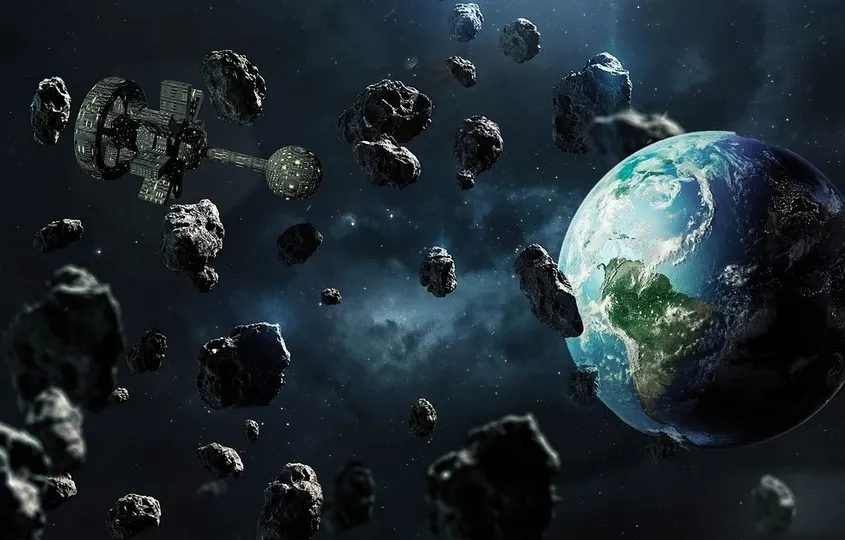United Arab Emirates announced asteroid belt mission in search for evidence of life’s origins
The United Arab Emirates on Monday announced plans to send a spacecraft to explore the solar system’s main asteroid belt, the oil-rich nation’s latest space project since the successful launch of the Hope spacecraft to Mars in 2020.
The project, called the Emirates Mission to the Asteroid Belt, aims to develop the spacecraft over the coming years and then launch it in 2028 to study various asteroids.
“This mission is a follow-up and continuation of the Mars mission, as it was the first Mars flyby in the region,” said Mohsen Al-Awadi, Emirates Mission Asteroid Belt Program Director. Same with this mission. This is the first mission to specifically study these seven asteroids, and the first of its kind from the Grand Tour side.”
The United Arab Emirates became the first Arab country and the second country ever to successfully reach Mars orbit in its first attempt when the Hope probe reached the red planet in February 2021. The rover’s goals are to provide the first complete picture of the Martian atmosphere and layers. and help answer key questions about the planet’s climate. and define it.
If successful, the newly announced spacecraft will soar at up to 33,000 kilometers (20,500 miles) per hour on a seven-year journey to study six asteroids. It will culminate in the placement of a lander on the rare “red” seventh asteroid, which scientists say could hold insights into the building blocks of life on Earth.
Organic compounds such as water are essential ingredients for life and have been found in some asteroids, likely transported by collisions with other organic-rich bodies or by the formation of complex organic molecules in space. Studying the origin of these compounds, as well as the possible presence of water in red asteroids, can shed light on the origin of water on Earth and thus provide valuable insights into the origin of life on our planet.
The effort is a major milestone for the fledgling UAE space agency, founded in 2014, after successfully sending the Amal probe, or “Hope,” to Mars. The new flight will extend the distance 10 times longer than the Mars flight.
The MBR scholar is named after the ruler of Dubai, Sheikh Mohammed bin Rashid Al Maktoum, who is also the vice president and prime minister of the hereditary United Arab Emirates. It first travels towards Venus, where the planet’s gravitational pull pushes it back through Earth and then Mars.
The vehicle will eventually reach the asteroid belt, fly within 150 kilometers (93 miles) of the celestial rock, and cover a total distance of 5 billion kilometers (about 3 billion miles).
In October 2034, the rover is expected to finally make its way to the seventh and final asteroid, called Justitia, before deploying the lander more than a year later. Justitia is believed to be one of two known red asteroids, and its surface is possibly full of organic matter.
Hoor Al Mazmi, a space science researcher at the UAE Space Agency, said: “It’s one of the reddest objects in the asteroid belt, and scientists don’t really understand why it’s so red. There are theories that it’s originally from the Kuiper belt, where there’s a lot of red. So this is something we can study because it’s also potentially water-rich.”
MBR Explorer will deploy a lander to explore the surface of Justitia, which will be developed entirely by the Emirati’s private start-ups. It could set the stage for potential future extraction of natural resources from asteroids to support human missions into space – and perhaps even the United Arab Emirates’ ambitious goal of building a colony on Mars by 2117.
Al-Awadhi said: “We have identified various key areas that we want private sector startups to be a part of and we will engage with them through that. We understand that the knowledge we have in the UAE is that you are still learning as it is built. We equip these startups with the knowledge you need.”




